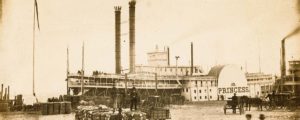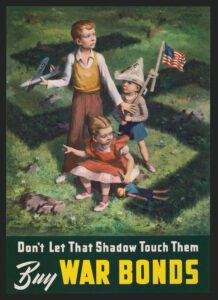Reviewed by Allyson Patton
By Susan Cohen
Published by Interlink Books, Northampton, Massachusetts, 95 pages,
During the Victorian era, tea was transformed from a simple beverage, taken at breakfast or after dinner, into a late afternoon event. As the story goes, formal tea was introduced sometime in the 1840s when the Seventh Duchess of Bedford ordered her maid to serve tea and refreshments at 5 o’clock in the afternoon to alleviate the “sinking feelings” of hunger that she daily suffered during the long hours between lunch and the 9 p.m. dinner hour. To the English, however, tea is more than an excuse for an extra meal. Queen Victoria’s prime minister, William Gladstone, said it best when he observed in 1865: “If you are cold, tea will warm you; if you are too heated, it will cool you; if you are depressed, it will cheer you; if you are excited, it will calm you.” For those who love the drink, tea is an occurrence and a cure-all. In Where to Take Tea, author Susan Cohen gives an overview of the evolution of the world’s most popular beverage and provides a delightful guide to the best places to enjoy it.
The first of this slim volume’s two sections gives a brief history of tea, relating its earliest origins in China and the tea trade. It also provides information on tea paraphernalia, modifications to the teapot, and the different kinds of teas. One of the many sidebars that pepper this book is “The Power of the Leaves,” with a key for reading the dregs in the bottom of a cup. For instance, if the tea leaves form an anchor shape, it signals a voyage in the tea drinker’s future. A peacock means immortality, and a feather signifies a “lack of concentration.”
The author also explains how tea service grew into a ritual. Topics include tea garden parties, tea picnics, traveling tea, tea fashion and even tea-dancing. It seems that afternoon tea from 1912 on could include, along with finger sandwiches, the tango, the turkey trot and the Charleston. Both the Savoy and the Royal Opera House in London still routinely hold weekend tea dances. The first part of the book concludes with a short history of tearooms and teashops—a perfect segue to the next section, a directory of places to take tea today.
The author divides the last portion of the book into two segments. The first details tearooms in London, and the second does the same for an additional 25 located throughout “The Rest of Britain.” Each entry includes contact information, location, hours of operation, the kinds of tea served and menu highlights. Cohen’s description of each venue vividly captures the atmosphere of some of Britain’s finest tearooms with such entries as this one for the Dorchester in London: “Your afternoon of sheer luxury begins as soon as you sink into one of the lounge’s cozy sofas, or settle on a silk damask upholstered chair. Here you are surrounded by acres of marble, gilded columns, luxurious carpets, Regency mirrors, and marble-topped tables.” The menu includes a “daily-changing selection of six sorts of finger sandwiches, freshly baked warm scones, and delectable French pastries.”
Cohen’s effort is well worth the read for the directory alone. If tea wasn’t your favorite drink before reading Where to Take Tea, it certainly will be afterward.




